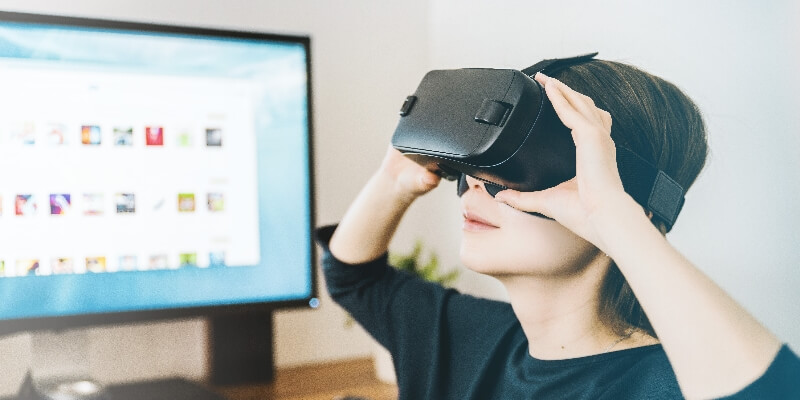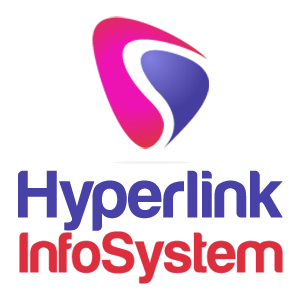As smartphone and mobile devices become extensions of our beings, the apps we constantly reshaping the way we communicate, order food, shop for clothes and look for information. We use them as alarms, music players, messaging and social platforms, news-aggregators, you name it. Trends might come and go, but there are some persevering functionalities which seem to guide app development as the time goes by. But what are these functionalities and which trends should we expect to shape 2018 and remain present in the years to come?
Artificial Intelligence
Artificial intelligence is the buzzword in 2018. It was the stuff of sci-fi movies just a couple of years ago, but today it stands at the forefront of technological innovation. AI has been successfully integrated into mobile applications, with Google incorporating it into its
Assistant and Photos app. AI is also routinely combined with chatbots in order to provide users with the best possible user experience without any input and output from real human beings. Making apps smarter will help companies hundreds of millions of dollars down the line and help organization experience rapid growth as they have to invest funds into human resources.
AR and VR
Google Cardboard, HTC Vive, Oculus Rift and Samsung Gear VR are just some of the most prominent examples of consumer-oriented augmented and virtual reality solutions. AR and VR are slowly but surely creeping their way into our daily lives. Pokémon Go is arguably the largest AR success story in recent times, with more than 800 million downloads and total revenue of
$1.8 billion dollars.
Apple CEO, Tim Cook, is one of the biggest proponents of AR, praising its ability to improve human performance. In fact, Apple is so keen on augmented reality that it recently purchased a company that
specializes in making lenses for AR-enabled, smart glasses.
Apple isn’t the only tech giant betting on the future of AR. Snapchat is one of the first companies to provide its users with AR-enabled face-changing filters and today, they can be found in most instant messaging and social media apps, including Instagram, Facebook Messenger, etc.
IKEA is ahead of the curve when it comes to VR-enabled solutions, having launched a virtual reality e-commerce store. A UK-based, nonprofit organization for Alzheimer research has created a VR experience called “
A Walk Through Dementia” in an effort to present a tangible, moving connection to an otherwise highly disruptive disease. National Geographic is also on the VR forefront, offering a number of highly immersive and engaging pieces of content.
Instant apps
Launched in 2016,
Google’s instant apps are still highly revered and appreciated for their convenience and user-friendliness. They don’t have to be installed and as such, require fewer megabytes and are less resource intensive. Instant apps can be integrated with similar functionality found in full-fledged websites and you have some quite famous names such as Buzzfeed, Periscope, NY Times and Vimeo offering them to their userbase. Immediate access without downloading and installing sounds ideal for most users, which is why we’ll certainly see this trend continue to be relevant in the following years.
Chatbots
According to a report produced by Garter, chatbots could potentially save
up to $8 billion between 2018 and 2020. Other report states that chatbots are going to be used for more than 80% of all customer service tasks by the end of 2020. Amazon and Facebook are already adopting chatbots into the majority of their customer-related tasks, which only reinforces the idea of chatbots taking over all aspects of client and customer management.
The best examples of chatbot technology being deployed in day-to-day activities include Amazon’s Alexa, Apple’s Siri and Google’s Duplex, prompting a new age of interaction between human beings and smart technology. Industries that could potentially benefit from deploying chatbots in their everyday business include cab and food delivery services, healthcare and many, many more.
Some of the biggest names in Ecommerce also use this technology to enhance their customer experience. Their employee satisfaction increases and with it the sales go up as well, so it is no wonder that an increasing number of companies started using chatbots as part of their daily customer interaction.
IoT and Wearables
IoT industry is expected to
reach $267 billion. We are already using a number of devices and home appliances that we control via dedicated apps, but tech giants such as Microsoft are proposing to integrate entire cities with IoT-enabled technologies. Apple, Motorola, Samsung, and Xiaomi are just some of the companies already investing large parts of their budgets in wearable tech, such as fitness devices and smartwatches. The best example of wearable tech success is Fitbit, having sold more than 15 million smart fitness devices.
Stay Ahead of the Trends
These are just some of the most prominent trends in 2018. The benefits their functionality offers simply cannot be overlooked and we’ll certainly see more and more iPhone and
android app development company focus on AI, AR and VR solutions, chatbots and try to integrate their apps by
app developer into ever-evolving nature of IoT architecture. Are there any other trends you think deserve to be on this list?



